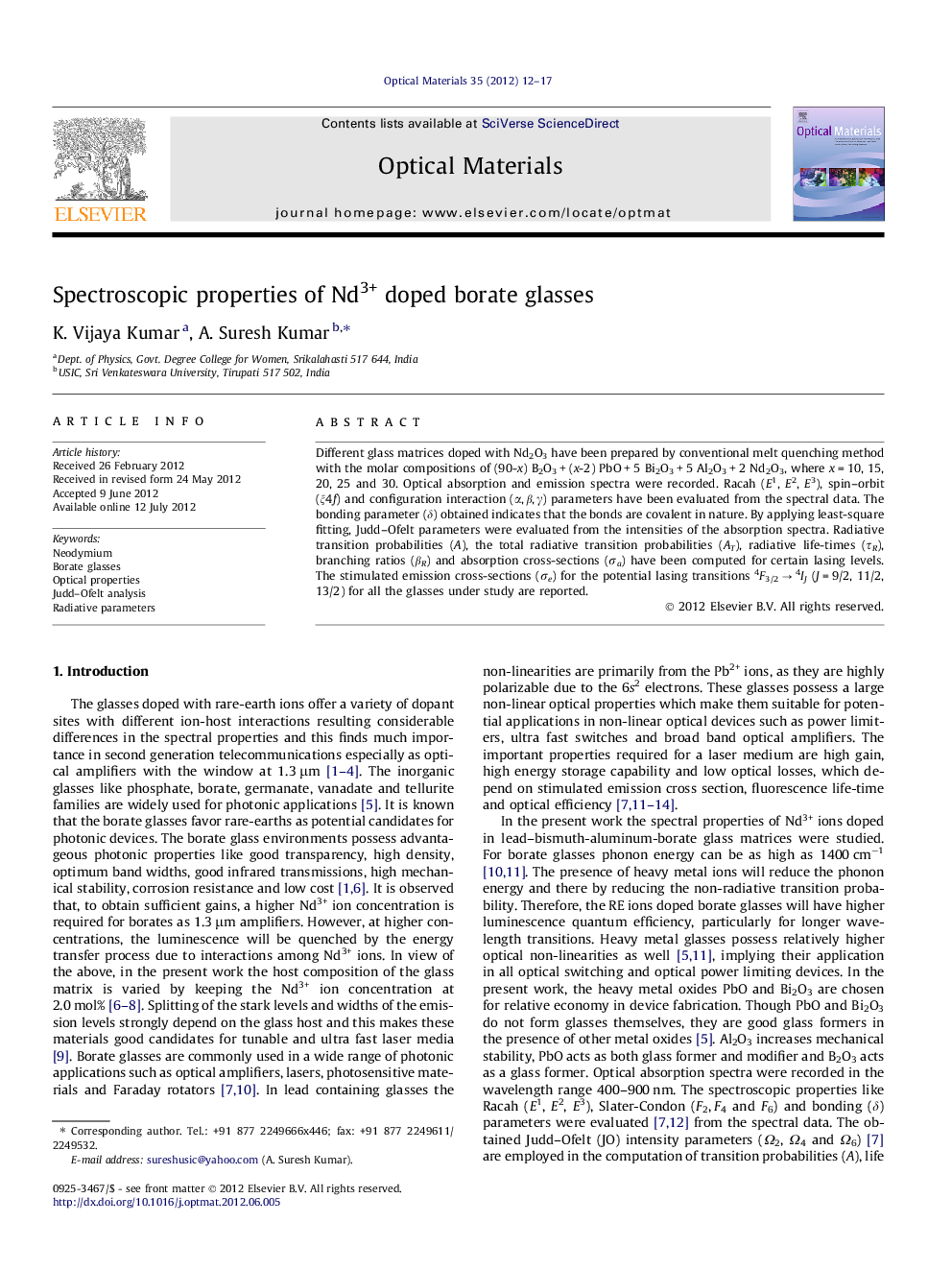| Article ID | Journal | Published Year | Pages | File Type |
|---|---|---|---|---|
| 1495260 | Optical Materials | 2012 | 6 Pages |
Different glass matrices doped with Nd2O3 have been prepared by conventional melt quenching method with the molar compositions of (90-x) B2O3 + (x-2) PbO + 5 Bi2O3 + 5 Al2O3 + 2 Nd2O3, where x = 10, 15, 20, 25 and 30. Optical absorption and emission spectra were recorded. Racah (E1, E2, E3), spin–orbit (ξ4f) and configuration interaction (α, β, γ) parameters have been evaluated from the spectral data. The bonding parameter (δ) obtained indicates that the bonds are covalent in nature. By applying least-square fitting, Judd–Ofelt parameters were evaluated from the intensities of the absorption spectra. Radiative transition probabilities (A), the total radiative transition probabilities (AT), radiative life-times (τR), branching ratios (βR) and absorption cross-sections (σa) have been computed for certain lasing levels. The stimulated emission cross-sections (σe) for the potential lasing transitions 4F3/2 → 4IJ (J = 9/2, 11/2, 13/2) for all the glasses under study are reported.
Graphical abstractFigure optionsDownload full-size imageDownload high-quality image (57 K)Download as PowerPoint slideHighlights► Optical properties of Nd3+: PbO–Bi2O3–Al2O3–B2O3 glasses have been investigated. ► Hydrogenic ratios were obtained and analyzed for Nd3+ ions. ► Ω2 and δ indicate stronger covalency and higher asymmetry around Nd3+. ► Low χ value indicates 4F3/2 → 4I11/2 lasing transition is relatively strong. ► βR and σe are of higher in magnitudes for 4F3/2 → 4I11/2 lasing transition.
